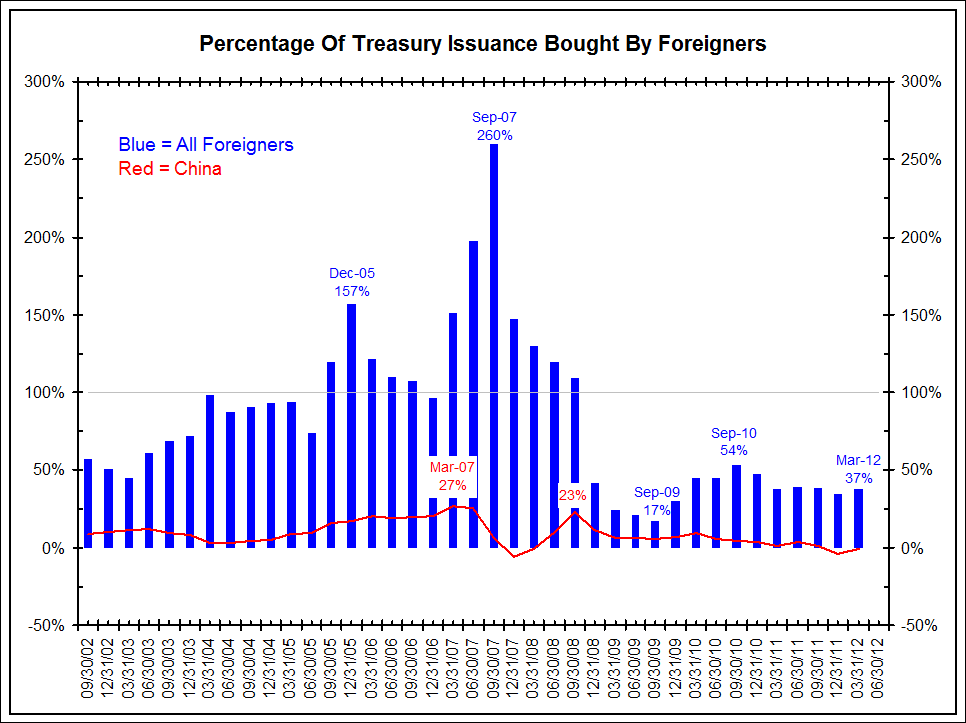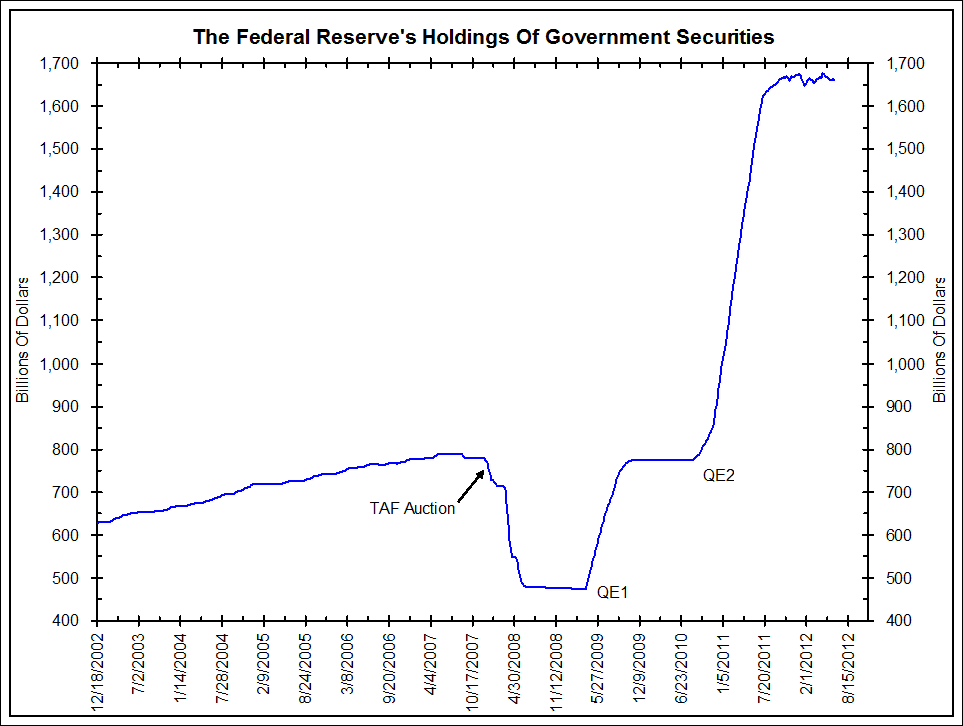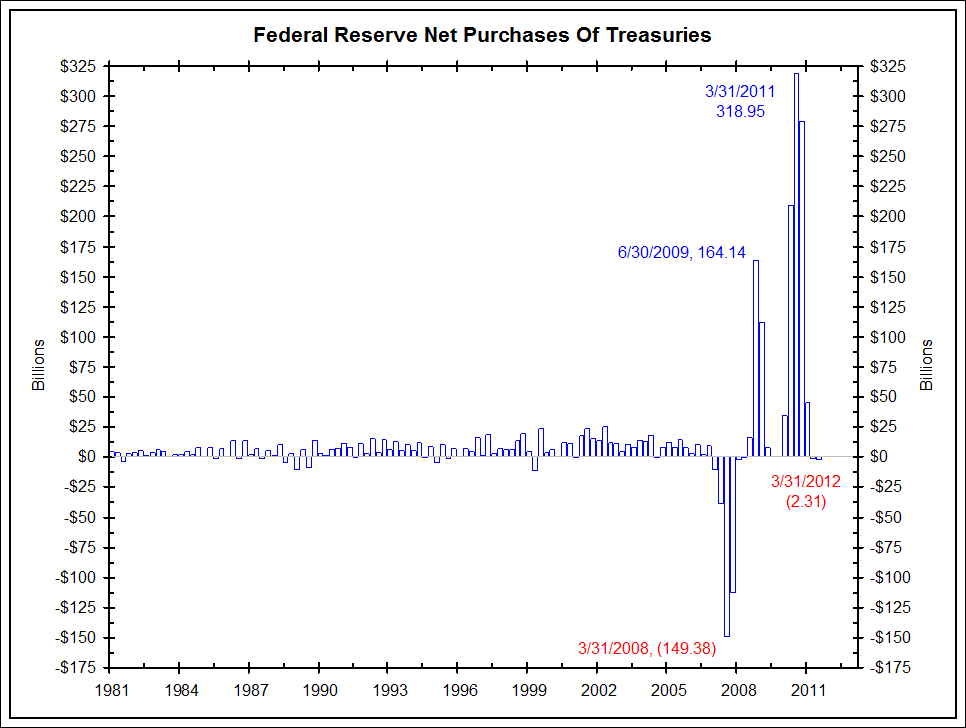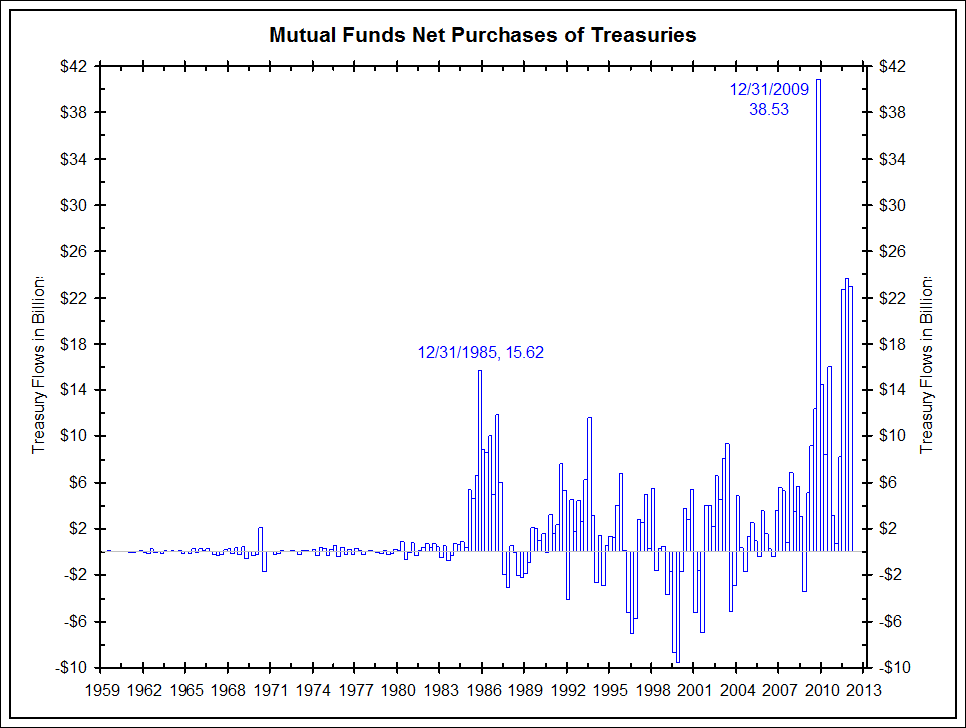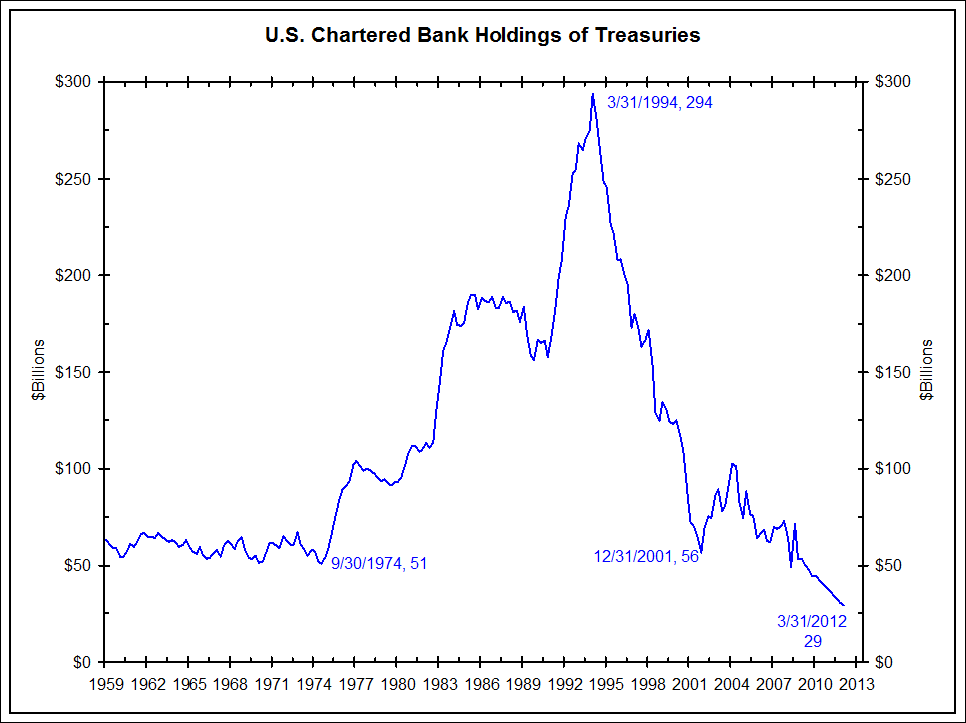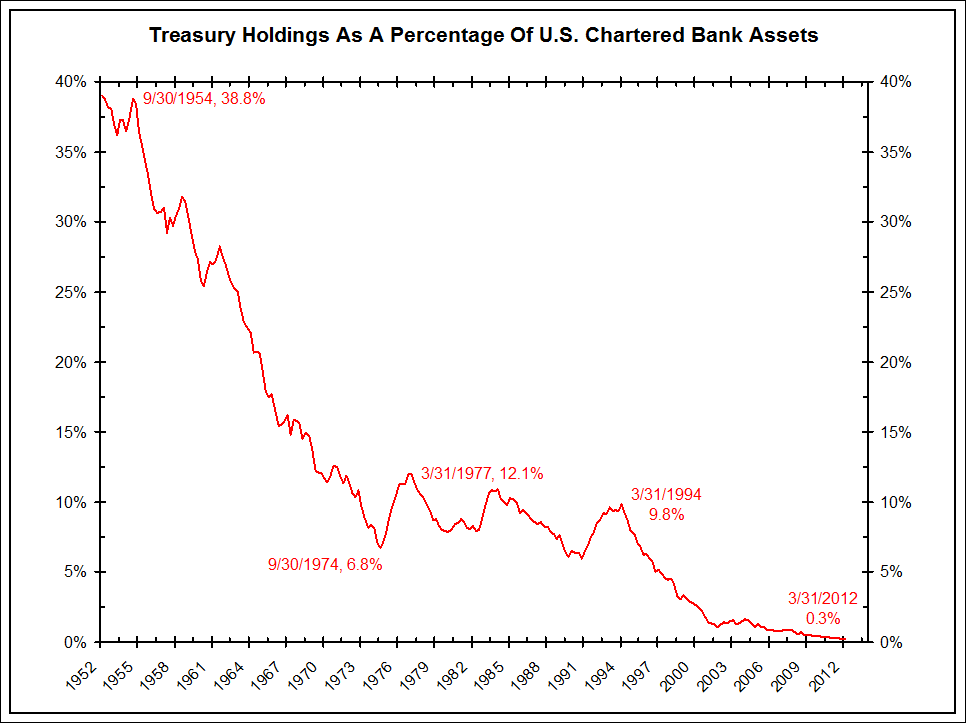CNBC – Guess Who’s Buying All the Bonds? (It’s Not the Fed)
Mom-and-pop investors, and not the Federal Reserve, have been the ones most responsible for driving the mad dash to government debt, according to newly released data. The Fed’s ambitious Treasury-buying program has pushed the central bank’s balance sheet to $2.83 trillion and, by many accounts, the benchmark 10-year Treasury yield to record lows, most recently to 1.56 percent. But despite the low yields, it’s been retail investors most responsible for the recent move plunge. “The conventional view is that 10-year Treasury yields have been pushed down to 1.5 percent and 10-year (Treasury Inflation Protected Securities) yields to -0.5% by the actions of the Federal Reserve and the safe haven demand from foreign investors,” Capital Economics said in a research note. “The reality, however, is slightly different.” The demand among average investors has swelled so much, in fact, that they bought more Treasurys in the first quarter than foreigners and the Fed combined. Households picked up about $170 billion in the low-yielding government debt during the quarter, while foreigners increased their holdings by $110 billion. The Fed, meanwhile, actually slightly decreased its net holdings, not a surprise since its latest quantitative easing endeavor begun in September — nicknamed Operation Twist — was designed to be balance sheet-neutral. The central bank is selling short-dated notes and buying an equal number of longer-duration issues in an effort to drive down borrowing rates and boost risk. For Capital, the more meaningful aspect of Treasury demand from households is that should the Fed opt not to do more easing when Twist concludes at the end of June, there still will be demand for government debt that could keep yields from surging as some expect. Retail investors have continued to draw down their money market funds but direct the cash instead to bonds, while equity mutual funds continue to lose flows. The move is seen in large part because of fears over the European debt crisis and U.S. economic slowdown.
Comment
Foreign Buyers
When asked who is buying Treasury debt, people usually instinctively think of foreigners.
At face value, the next two charts look impressive. The first shows all foreign buyers of Treasury notes and bonds on both on a monthly (top panel) and a rolling 12-month sum basis (bottom panel). This data comes from the Treasury International Capital(TIC) Report.
As the bottom panel shows, foreign net purchases of Treasuries totaled just under $400 billion in the past year.
Click to enlarge:

When viewed in the light of surging issuance, foreign purchases are actually falling as a percentage of bonds auctioned.
The next chart compares foreign net purchases of Treasuries to the amount of bonds issued every quarter in blue. The red line compares Chinese net purchases of Treasuries to the amount of bonds issued every quarter.
From 2004 to 2008 all foreigners regularly bought more Treasury securities than were issued. This is shown as a ratio above 100%. To be clear, the ratio below shows all Treasury securities bought by foreigners (whether at auction or in the secondary market) relative to all securities issued by the Treasury department for the quarter.
Since mid-2008 foreign purchases of Treasury securities have been under 50% of securities auctioned, and the Chinese have bought less than 10% of the amount auctioned. Even though foreigners have almost doubled their buying of Treasuries in the last few years, they have not kept pace with growing Treasury issuance over the same period. As a result, foreign purchases now account for less than half of what has been issued since mid-2008. Domestic purchasers of Treasuries are now buying more than half of the amount auctioned.
Who are these domestic purchasers of Treasuries?
Domestic Investors – The Federal Reserve
When thinking about potential domestic purchasers of Treasury securities, the Federal Reserve quickly comes to mind. The two charts below show the Federal Reserve’s holdings of Treasuries and their quarterly net purchases. This data comes from the flow-of-funds report.
When the Federal Reserve first created the Term Auction Facility, or TAF, in late 2007, they initially “sterilized” any loans by selling Treasuries in an amount equal to those loans. This is evident in the large quarterly net sales in early 2008 in the second chart below. Since foreigners were buying more Treasuries than were being issued during this period (greater than 100% in the chart above), these sales were not a problem.
The Federal Reserve’s holdings of government securities quickly rose in light of QE1 and QE2. Even though foreign demand for Treasuries was still present during this time, the Federal Reserve’s purchases far outpaced foreign purchases.
Domestic Investors – Mutual Funds
The next big domestic buyer that comes to mind is the mutual fund community with more than $12.4 trillion in assets ($9.9 trillion in long-term funds — stocks, bonds and hybrid funds — and $2.5 trillion in money market mutual funds). The two charts below show the net purchases of Treasuries for money market mutual funds and long-term mutual funds. This data also comes from the Federal Reserve’s flow-of-funds report.
As the first chart shows, money market mutual funds were net sellers of Treasuries seven quarters in a row before returning with net purchases.
The second chart shows long-term mutual funds are net buyers of Treasuries. While these purchases have rebounded in recent quarters, neither the long-term mutual funds nor the money market funds are large players in the Treasury market when compared to foreigners or the Federal Reserve.
Domestic Investors – Banks
Are banks’ holdings of Treasuries closer in scale to those of the Federal Reserve or foreigners?
The first chart below shows U.S. chartered bank holdings of Treasuries have declined from $294 billion in Q1 1994 to just $29 billion in Q1 2012. The second chart shows a long-term look at the percentage of banks’ assets invested in Treasuries. Back in the 1950s it was near 40%. Today it is less than 0.3%. Simply put, banks do not buy Treasuries.
Conclusion
We have shown that the deficit has exploded higher to the point that issuance is outrunning foreign purchases. Clearly a large portion of this issuance has been bought by the Federal Reserve in the form of QE1 and QE2. As we showed yesterday, the default category of “households” chipped in with almost $200 billion of Treasury purchases during Q1 2012.
With QE2 now a relic of the past, the Federal Reserve would have to initiate a new round of QE to continue soaking up Treasury issuance. Sterilized programs such as Operation Twist will alter the Federal Reserve’s holdings, but will not contribute to soaking up overall Treasury issuance. Rates have managed to stay at historic lows for the now, but the categories of Treasury debt highlighted above will bear watching. Should any of the private sector purchasers walk away, the Federal Reserve will have some difficult decisions to make regarding its ability/desire to further prop up this market.
Source: Bianco Research

